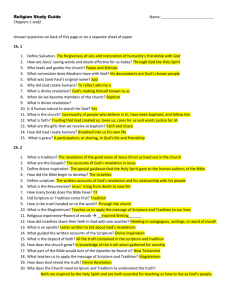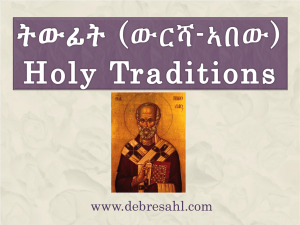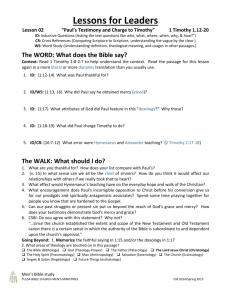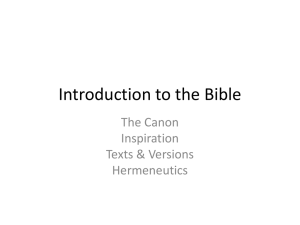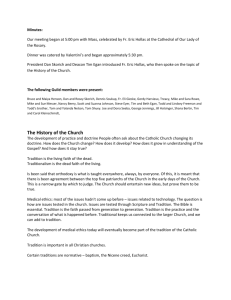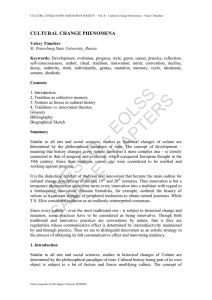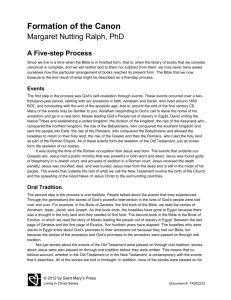Powerpoint - How the Bible Came To Be
advertisement
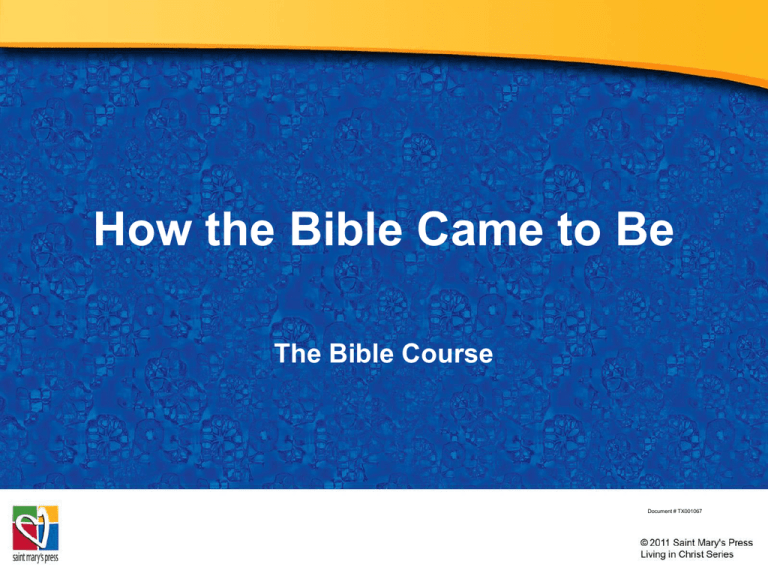
How the Bible Came to Be The Bible Course Document # TX001067 What Is an Oral Tradition? • Are there any family stories that get told when your extended family is gathered? Are there any stories that get handed down from one generation to the next? • An oral tradition is a tradition that is passed on from generation to generation by word of mouth. • Some families have both written and oral traditions. Why might a family oral tradition be written down? Image in public domain The Stages in the Development of the Scriptures Image in public domain • After Jesus ascended into Heaven, his disciples continued his mission by preaching and teaching about Christ. • Typically, the oral tradition developed into the written Word in the following stages: – People experienced God. – These experiences were shared orally. – Inspired authors created a written version. – The successors of the Apostles, guided by the Holy Spirit, discerned the books to be included in the Scriptures (the canon). • Have you ever had an awesome experience that changed you as a person? • Have you ever had an experience that brought you closer to God? • People’s experience of God is central to the passing on of the message of the Scriptures. • People experienced God through Revelation—whether over a long period of time as in the Old Testament or through the person of Jesus in the New Testament. Images - © The Crosiers/Gene Plaisted, OSC People Experience God People Shared Their Experiences of God • Think about the life-changing experience or experiences, identified in the previous slide, that brought you closer to God. • How do you first share the story of that experience with someone else? • Oral tradition: The handing on of the message of God’s saving plan, culminating in Jesus Christ, through storytelling, preaching, parables, and sacred wisdom. • Most of the Bible’s writings were first transmitted orally and then written down. People Wrote Down the Stories Image in public domain • Because of their desire to capture the stories for future generations or to record the authentic version, believers began recording the oral tradition in writing. • Written tradition: The synthesis of the oral tradition into written books, capturing Divine Revelation under the inspiration of the Holy Spirit. • The term canon comes from the Greek word meaning “rule” or “standard.” • The biblical canon is the collection of books the Church recognizes as the inspired Word of God. • The books of the Scriptures are canonical because they contain God’s Revelation to human beings. © Saint Mary’s Pres/Paul Casper The Church Determines the Canon The Development of the Canon in Early Christianity • The successors to the Apostles were guided by the Holy Spirit in discerning the canon of the New Testament. • They looked at the following criteria as they evaluated the writings: – – – – apostolic origin universal acceptance the use of the writings in liturgical celebrations the consistency of a book’s message with other Christian and Jewish writings Translations of the Bible Are Created • The Bible was originally written in three languages: – Hebrew – Aramaic – Greek • The Vulgate was the first common language translation. It was Saint Jerome’s translation of the Greek and Hebrew Scriptures into Latin. • The Council of Trent recognized the Vulgate as authoritative. • The Vulgate became the official Bible of the Roman Catholic Church for several centuries. Images in public domain

